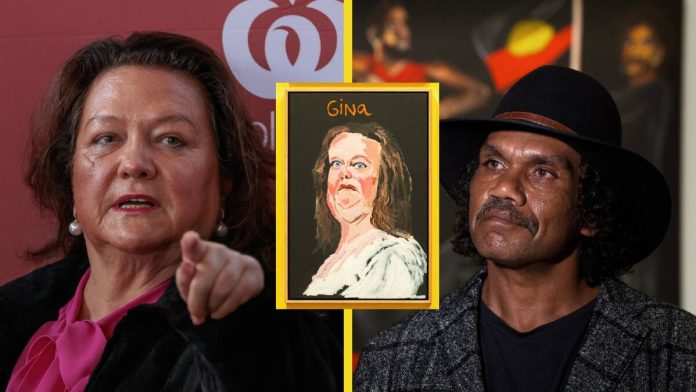The clash between artistic expression and personal sensitivities has once again ignited a debate, this time centering around the National Gallery of Australia’s refusal to remove Gina Rinehart’s portrait from its exhibition. The portrait, crafted by the acclaimed artist Vincent Namatjira, has drawn the ire of Australia’s wealthiest woman, prompting her to demand its removal. Yet, the gallery stands firm, emphasizing the importance of artistic freedom and public dialogue.
Vincent Namatjira’s exhibition at the National Gallery marks a significant milestone in his artistic journey. As an APY lands-based artist, Namatjira’s work delves into themes of identity, power, and cultural commentary. His portraits, including the controversial depiction of Gina Rinehart, serve as poignant reflections of contemporary Australian society.
The refusal to remove Rinehart’s portrait underscores the gallery’s commitment to fostering critical discourse and intellectual engagement. Since its acquisition of Jackson Pollock’s Blue Poles in 1973, the National Gallery has been a bastion of artistic expression, inviting viewers to ponder and interpret the meaning behind each work.
However, Rinehart’s reaction to the portrait raises questions about the role of patrons in influencing artistic representation. As a benefactor of the National Gallery, her demand for removal reflects a tension between financial support and artistic autonomy. While her contributions are undoubtedly valuable, they do not grant her unilateral authority over the gallery’s curatorial decisions.
This incident also sheds light on broader issues of power dynamics and accountability within the art world. Rinehart’s wealth and influence afford her a platform to voice her grievances, but it does not exempt her from critique or scrutiny. The gallery’s steadfast refusal to capitulate to her demands reaffirms the principle that art should not be beholden to the whims of the elite.
Moreover, the controversy surrounding Rinehart’s portrait highlights the potency of art as a catalyst for social commentary and reflection. Namatjira’s portrayal of Rinehart, alongside other notable figures like Queen Elizabeth II and Adam Goodes, serves as a mirror to society, inviting viewers to interrogate notions of privilege, authority, and representation.
Beyond the immediate controversy, Vincent Namatjira’s exhibition offers a deeper exploration of identity and heritage. As the great-grandson of the renowned watercolorist Albert Namatjira, Vincent’s work is imbued with a profound sense of cultural legacy and resilience. His journey from foster care in Perth to artistic acclaim speaks to the enduring power of art to transcend boundaries and reclaim lost narratives.
In the midst of this debate, it is essential to uphold the principles of artistic freedom and intellectual inquiry. While disagreements may arise, they should serve as opportunities for dialogue and introspection rather than censorship or suppression. The National Gallery’s decision to stand by Vincent Namatjira’s portrait reaffirms its commitment to fostering a vibrant and inclusive artistic community.
As the exhibition continues to spark conversation and controversy, it is a poignant reminder of the enduring power of art to challenge, provoke, and inspire. In a world fraught with division and discord, let us embrace the transformative potential of art to unite, enlighten, and empower.


